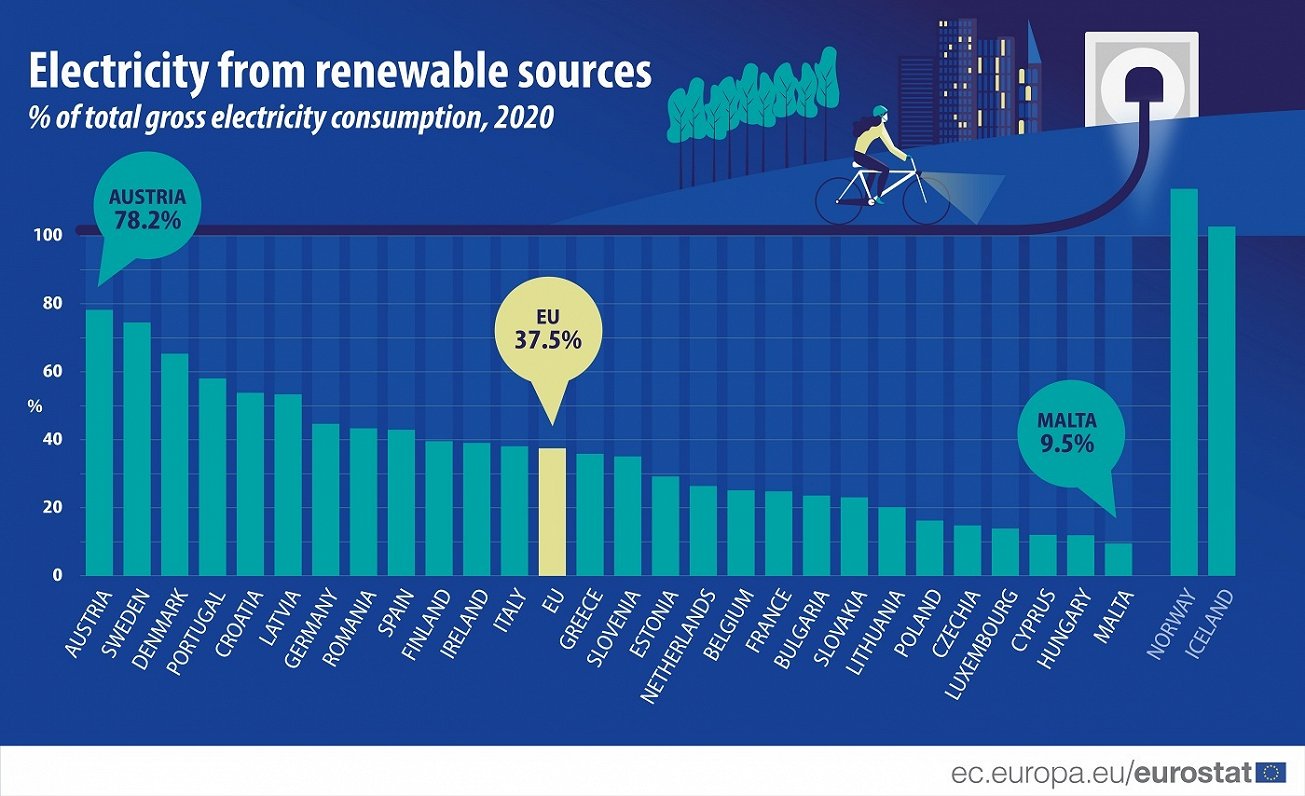In 2020, renewable energy sources made up 37% of gross electricity consumption in the EU, up from 34% in 2019.
Wind and hydropower accounted for over two-thirds of the total electricity generated from renewable sources (36% and 33%, respectively). The remaining one-third of electricity came from solar power (14%), solid biofuels (8%) and other renewable sources (8%). Solar power is the fastest-growing source: in 2008, it only accounted for 1% of the electricity consumed in the EU.

Among the EU Member States, more than 70% of electricity consumed in 2020 was generated from renewable sources in Austria (78%) and Sweden (75%). The generation of electricity from renewable sources was also high and accounted for more than half of the electricity consumed in Denmark (65%), Portugal (58%), Croatia and Latvia (both 53%).
However, it is worth noting that Latvia's level has remained roughly the same for the last seven years, with between 51% and 54% of electricity coming from renewables (mainly hydropower) every year since 2014. The share of energy from renewable sources in heating and cooling was more than half in Sweden (66.4 %), Estonia (57.9 %), Finland (57.6 %) and Latvia (57.1 %).
The non-EU but EFTA countries Norway and Iceland reached a share higher than 100%, because they produced more electricity from renewables than their total electricity consumption.
At the other end of the scale, the share of electricity from renewable sources was 15% or less in Malta (10%), Hungary and Cyprus (both 12%), Luxembourg (14%) and Czechia (15%).






























